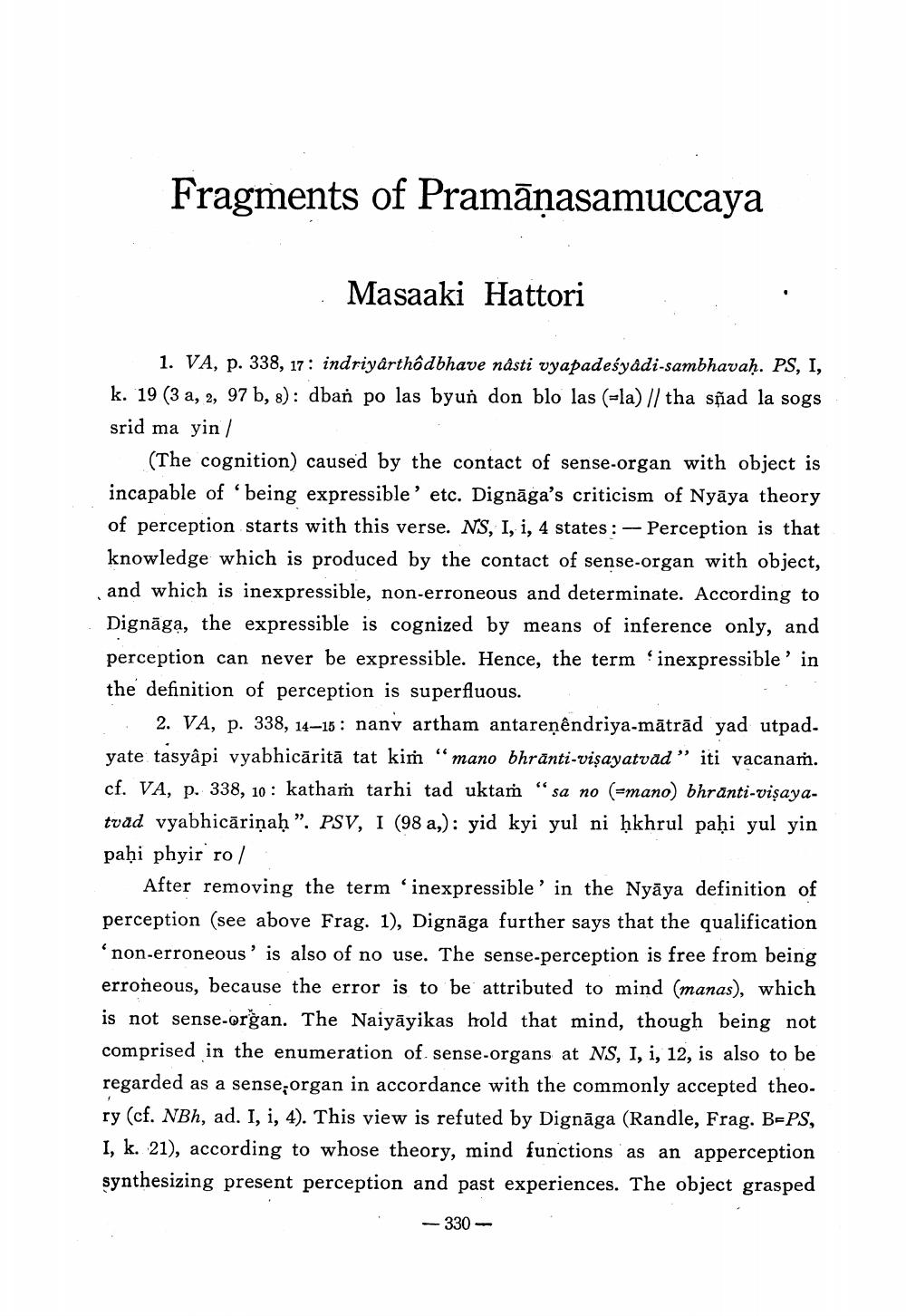Book Title: Fragments Of Pramana Samuccaya Author(s): Massaki Hattori Publisher: Massaki Hattori View full book textPage 1
________________ Fragments of Pramāṇasamuccaya Masaaki Hattori 1. VA, p. 338, 17: indriyârthôdbhave nâsti vyapadeśyadi-sambhavaḥ. PS, I, k. 19 (3 a, 2, 97 b, 8): dban po las byun don blo las (=la) // tha sñad la sogs srid ma yin/ (The cognition) caused by the contact of sense-organ with object is incapable of being expressible' etc. Dignāga's criticism of Nyāya theory of perception starts with this verse. NS, I, i, 4 states: -- Perception is that knowledge which is produced by the contact of sense-organ with object, and which is inexpressible, non-erroneous and determinate. According to Dignāga, the expressible is cognized by means of inference only, and perception can never be expressible. Hence, the term 'inexpressible' in the definition of perception is superfluous. 2. VA, p. 338, 14–15: nanv artham antareņêndriya-mātrād yad utpad. yate tasyâpi vyabhicāritā tat kim “mano bhrānti-visayatvad” iti vacanam. cf. VA, p. 338, 10 : katham tarhi tad uktam “sa no (=mano) bhrānti-visayatoad vyabhicārinah”. PSV, I (98 a): yid kyi yul ni hkhrul pahi yul Yin paḥi phyir ro / After removing the term 'inexpressible' in the Nyāya definition of perception (see above Frag. 1), Dignāga further says that the qualification ‘non-erroneous' is also of no use. The sense-perception is free from being erroneous, because the error is to be attributed to mind (manas), which is not sense-organ. The Naiyāyikas hold that mind, though being not comprised in the enumeration of sense-organs at NS, I, i, 12, is also to be regarded as a sense organ in accordance with the commonly accepted theo. ry (cf. NBh, ad. I, i, 4). This view is refuted by Dignāga (Randle, Frag. B=PS, I, k. 21), according to whose theory, mind functions as an apperception synthesizing present perception and past experiences. The object grasped - 330 -Page Navigation
1 2 3 4 5 6
